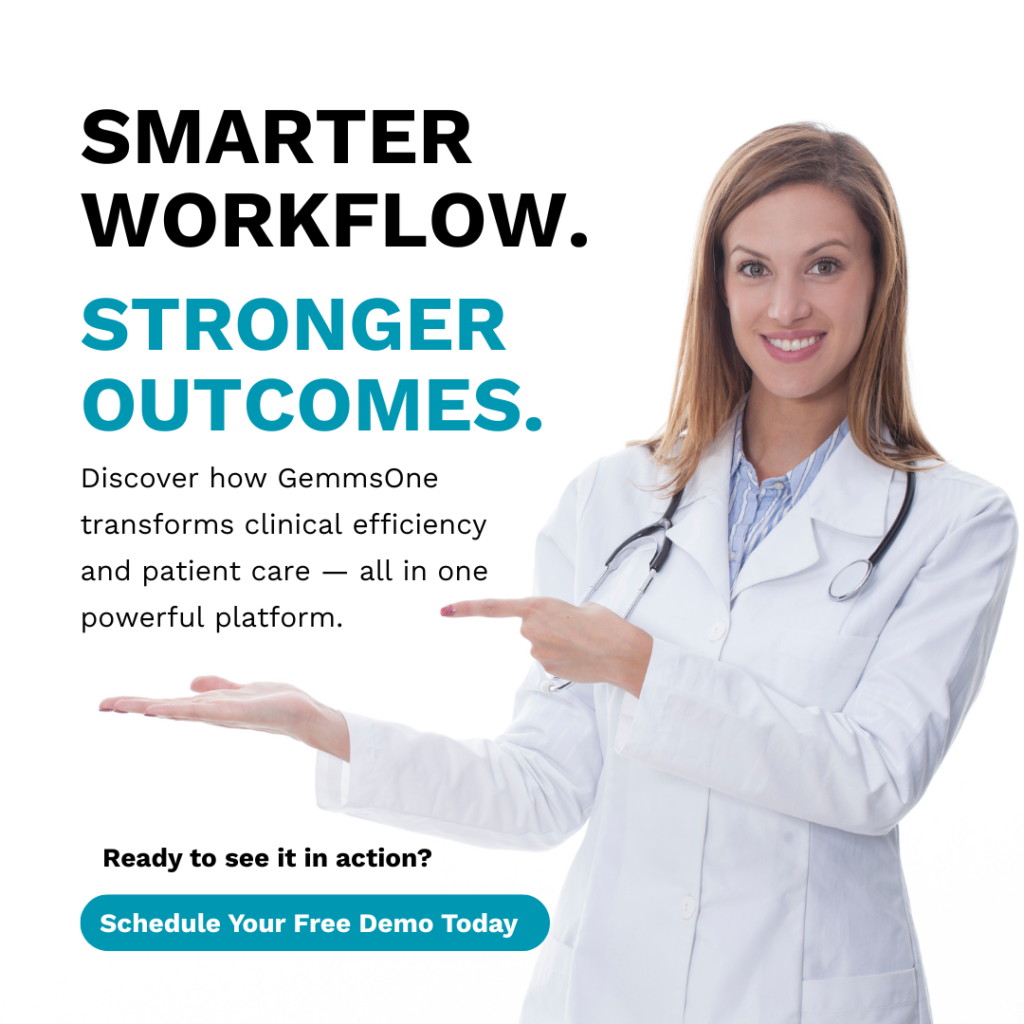With high-volume workloads, compliance requirements, and seemingly endless documentation, cardiology practices often rely on software tools to support their efforts.
Electronic health records (EHR) software is a common tool. It can significantly improve practice flow, reduce administrative burdens, improve communication, and support data security initiatives. But how does it fit with the practice bottom line? Is EHR software really worth the investment?
In the cardiology field, where every detail counts, forecasting your return on investment (ROI) isn’t just smart; it’s essential for sustaining your practice.
In this guide, we’ll walk through why you need a cardiology specific tool, and deliver 6 practical steps to forecast EHR ROI, tailored for the field.
By the end, you’ll have a clear roadmap to evaluate solutions like GEMMS ONE and make data-driven decisions for your practice.
Why Not All EHR Tools Are Created Equal
EHR software can significantly improve medical practice workflows.
This software can reduce paperwork by automating manual tasks, enable quick and secure access to patient data, facilitate communication across care teams, allowing providers to spend more time focused on providing quality patient care.
But these benefits require the right fit. Choosing the wrong EHR platform can lead to wasted resources and, in turn, increase the administrative burden on physicians and staff.
Generic EHR software is not suitable for cardiology workflows. Cardiology requires monitoring of specific conditions, like hypertension, diabetes, and AFib, necessitating the need for an EHR platform that can not only support this work flow, but simplify it. Cardiology-specific EHR software like GEMMS ONE can streamline operations, facilitate MIPS-compliant reporting, reduce clicks for clinicians, enable faster billing for admins, and deliver better patient experiences.
6 Steps to Forecasting EHR Software ROI
To fully understand the benefits cardiology-specific EHR can have on your practice, you need to understand the impact on your bottom line.
Here are 6 key steps to forecasting your EHR software ROI:
Step 1: Assess Your Current Baseline Costs and Inefficiencies
Before you can begin forecasting future ROI, you need to benchmark your current costs and expenditures.
This step allows you to uncover hidden costs like staff overtime from inefficient workflows or lost revenue from denied claims.
- Begin by calculating your direct costs, like EHR licensing, hardware, training, and maintenance. It often costs more to maintain outdated software as quick patches and updates become less available.
- Next, track time spent on documentation to identify inefficiencies in the workflow. This includes time spent on tasks like manual MIPS reporting.
- Measure claim denial rates, patient no-shows, and any staff turnover attributed to overwork or burnout.
Consider using the following formula to calculate your costs:
Baseline Cost = (Staff Hours x Hourly Rate) + (Lost Revenue from Denials) + Overhead
Step 2: Define Your Practice's Goals
Before you can properly reduce expenses and manage costs, you must identify your cardiology clinic’s priorities, such as improving patient outcomes and reducing administrative burdens.
Set SMART goals.
SMART (Specific, Measurable, Achievable, Relevant, and Time-bound) goals will are easier to track and more achievable than arbitrary goals like “reduce documentation time.” Instead, make the goal to reduce documentation time by 25% by the end of the fiscal year. SMART goals will keep you on track and more easily identify areas for improvement.
When you have goals in place, you can better see the shortcomings of traditional EHR software and the benefits that can come from upgrading to a cardiology-specific platform.
Step 3: Estimate Implementation and Ongoing Costs
It is important to be realistic about upfront costs and recurring expenses to avoid any surprises.
- Break Down Initial Costs: estimate initial costs like software licensing, data migration, staff training, and ongoing support.
- Consider Hidden Costs: there will be downtime during transition so take this into account during estimation.
When migrating from traditional EHR to a practice specific platform, there may be a steep initial cost but there is likely to be reduced costs going forward. A tailored system can save thousands in add-on features and time spent on administrative tasks or clunky workarounds.
Step 4: Project Savings, Revenue Gains, and Intangible Returns
The EHR system will pay for itself through increased efficiencies and growth.
- Calculate your savings in times saved. With GEMMS ONE, you will need fewer clicks to complete the work, potentially saving 1-2 hours/day per clinician, which can be worth tens of thousands in productivity.
- Estimate revenues. Consider the reduced claim cycles and increased MIPS bonuses.
- Remember the intangible benefits. Improved patient satisfaction created by patient portals and improved care can increase retention and referrals, boosting revenue.
In high-volume clinics, cardiology-specific EHR software improves diagnostics and reporting, boosting outcomes and increasing reimbursements.
When calculating these gains, consider using the following formula:
Net Benefits = (Savings + Revenue Gains) – Costs
Set a goal to break even within 12-18 months.
Step 5: Run Scenarios and Sensitivity Analysis
In order to fully understand the potent ROI benefits of your EHR software, it is important to run various “what-if” scenarios. Doing so can account for variables like adoption rates or regulatory changes.
This can be a simple process. Create a spreadsheet to assess and model best/worst case scenarios. Be sure to consider all variables, like, if staff adoption is slow and extra training is required. Simulate cardiology-specific risks like volume fluctuations in CHF management and more.
Try to take a long-term view, projecting 3-5 years ahead, including updates for MACRA/MIPS changes and evolutions.
Step 6: Monitor, Measure, and Adjust Post-Implementation
ROI forecasting is not a one and done exercise. It is an ongoing process, requiring your to track results and refine strategies to ensure maximum returns.
- Set and Monitor KPIs: monitor your metrics quarterly. Cardiology specific platforms like GEMMS ONE have reporting dashboards that make it easy for you to find and track the information you need.
- Make Adjustments: access to a wealth of practice data, you can make adjustments to workflows and staffing to improve your revenues.
- Scale with Additional Features: adding additional features like integrated revenue cycle management can further improve your ROI.
We’ve prepared a Quarterly ROI Review Checklist to help your practice track key financial, operational, and patient engagement metrics.
Use this checklist as a guide to monitor progress and adjust your analytics to match your specific goals.
Experience EHR Software ROI with GEMMS ONE
ROI is not a single number but a living forecast that evolves with your practice, your patients, and regulatory changes.
With the right forecast—supported by data, scenarios, and post-implementation monitoring—you reduce risk and accelerate your path to measurable gains.
By utilizing the 6 steps listed above, you can properly estimate costs and returns, helping your cardiology practice remain viable.
Cardiology practices face rising administrative demands and evolving payment models. A cardiology-first EHR that aligns workflows with your specialty makes ROI more predictable and achievable
GEMMS ONE is designed specifically for cardiology, with built-in templates for hypertension, AFib, CHF, and more, plus streamlined documentation and MIPS-ready reporting.
The value isn’t just in software features; it’s in the practical outcomes: faster documentation, quicker claims processing, better patient engagement, and a more sustainable path to compliance.Contact GEMMS ONE today to schedule a demo and begin to improve your bottom line.
Want to see exactly how much ROI your practice could gain? Try our free ROI calculator or schedule a GEMMS ONE demo today


